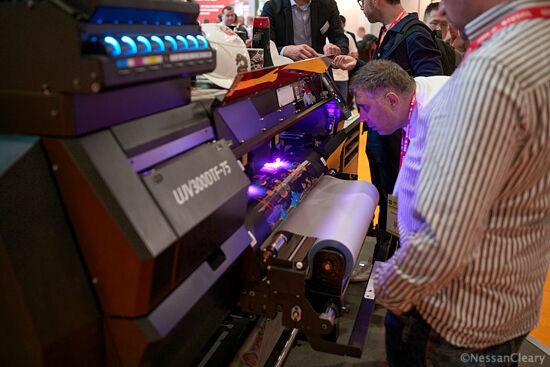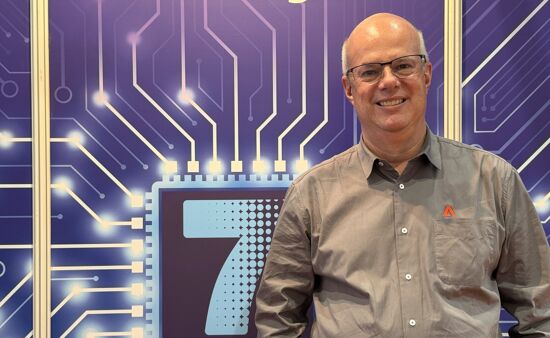How AI Is Quietly Reshaping the Print Industry

Johnny Shell, Principal Analyst at Keypoint Intelligence shares how AI is quietly transforming the print industry, enhancing efficiency and personalisation. It automates tasks like prepress checks, job scheduling, and colour management. AI also enables personalised printing, reduces waste through demand forecasting, and improves customer service with chatbots. This technology optimises workflows, not replaces human expertise.
The print industry is entering a new era — not through dramatic disruption, but through a steady shift driven by artificial intelligence. The technology isn't coming to replace what's already working; it's here to enhance it. From prepress to production and customer engagement, AI is helping print businesses work more efficiently, produce less waste, and deliver more personalized, high-quality output.
What's most notable is the practicality of the change. AI is being used to improve everyday tasks —automating job checks, adjusting layouts, routing production, and even predicting when a machine might need servicing. These tools aren't theoretical; they're already being used by forward-thinking print companies to solve real-world challenges.
In prepress, for example, AI-powered automation tools like Adobe Sensei and PrintIQ analyze and optimize files before printing. Preflight checks are completed faster and with fewer errors, meaning production teams can spend less time troubleshooting and more time getting jobs out the door. These systems reduce delays and rework, allowing for smoother job setup and faster turnaround.
Job scheduling and process automation are also seeing major gains. AI-driven print management systems can dynamically assign jobs based on available capacity and current workloads. This helps reduce idle time and ensures equipment runs at peak efficiency. In fast-paced environments with high-volume output, those gains quickly add up.
Design is evolving too. AI-assisted platforms like Adobe Firefly and Canva's smart features make layout adjustments, font pairing, and image enhancement easier and faster. These tools don’t replace designers, but they do streamline repetitive tasks and make professional-quality design more accessible.
Color management, long a challenge in high-value applications like packaging, is also benefiting from AI. Intelligent systems can analyze printed output for color inconsistencies and make real-time adjustments to maintain accuracy. This is especially important where color precision is tied directly to brand identity.
Variable Data Printing (VDP) is another area of advancement. AI analyzes customer data to create personalized materials at scale — customized messages, layouts, and images that connect with specific audiences. What used to be a complex and expensive process is becoming more efficient and scalable, making personalization more practical for both marketing and commercial applications.
AI is also making a measurable impact on on-demand production. Demand forecasting tools help printers anticipate volume based on historical trends, reducing the risk of overproduction. Just-in-Time (JIT) printing—enabled by these insights—ensures materials are produced only when needed, which reduces storage costs and waste.
Sustainability is a growing focus across the industry, and AI supports this by reducing misprints, optimizing ink usage, and tracking environmental impact. Real-time quality control systems detect defects as they happen and make corrections on the spot. This reduces reprints and wasted material—directly contributing to more sustainable operations.
The customer experience is changing as well. AI-powered chatbots and virtual assistants are providing round-the-clock support, answering questions, processing orders, and guiding customers through customization options. These tools help deliver a faster, more consistent service experience, especially for repeat or high-volume customers.
AI also plays a growing role in personalization strategies. By analyzing purchasing behavior and preferences, it can recommend relevant print products and configurations. Combined with automated marketing tools, it’s easier than ever to launch targeted campaigns that speak directly to customer interests.
These innovations are helping address several persistent challenges in the industry. Rising material and energy costs, skilled labor shortages, and the demand for faster, more customized output are all putting pressure on traditional workflows. AI helps alleviate those pressures by automating repetitive steps, improving quality control, and minimizing downtime.
Predictive maintenance is one example—AI sensors monitor printing equipment in real time, identifying signs of potential failure before they cause disruption. Some systems have shown the ability to reduce unplanned downtime by up to 30%, helping businesses stay on schedule and avoid costly repairs.
Looking ahead, the integration of AI with IoT (Internet of Things) is expected to drive even more innovation. Fully automated, self-monitoring print ecosystems are on the horizon. AI-powered robotics may also begin to take on tasks like binding and packaging. And in creative applications, AI could enable new formats, such as holographic and 3D print experiences.
But with these advancements come new responsibilities. Ethical questions around data privacy, workforce reskilling, and the limits of AI decision-making will need to be addressed. While AI enables more automation, human expertise and creativity remain central to delivering exceptional print work.
Ultimately, AI is not a replacement for the craft and care that define this industry. It's a set of tools that, when used thoughtfully, can help printers work smarter, reduce waste, improve consistency, and meet growing customer expectations. The print industry has a long history of adapting to change — and AI is simply the next chapter in that evolution.
By Johnny Shell and Lisa Brown – Principal Analysts, Keypoint Intelligence
Johnny Shell
Johnny Shell is a textile and apparel decorating expert with over 38 years of experience. As Principal Analyst at Keypoint Intelligence, he helps clients analyze trends, forecast growth, and develop competitive strategies. Formerly VP of Technical Services at Printing United Alliance, he led training programs and chaired industry committees. An inductee of the Academy of Screen and Digital Printing Technology, Johnny is a recognized thought leader, speaker, and contributor to top industry publications.
Lisa Brown
Lisa Brown is a Principal Analyst at Keypoint Intelligence, specializing in client performance optimization, market research, and advisory services. With over a decade of experience in workplace technology, she delivers actionable insights on market trends and competitive strategies. Previously, she was a Senior Analyst at gap intelligence, working closely with manufacturers. Focused on AI's impact on the document industry, Lisa helps clients develop strategies to maximize business opportunities in a rapidly evolving market.
Interested in joining our community?
Enquire today about joining your local FESPA Association or FESPA Direct
Recent news

The latest innovations in DTF printing
The Direct-to-Film (DTF) market is experiencing significant growth, with major printers now offering dedicated solutions. Beyond the traditional textile applications, there's a notable expansion into UV DTF technology, allowing for heat-free application to various objects. This evolution, alongside advancements from companies like Epson, Roland, Brother, and Ricoh, indicates DTF's continued diversification and increasing appeal for diverse printing needs.
.png?width=550)
Personalisation Experience 2025 - Overall Highlights
Personalisation Experience 2025 saw the meeting of global visionaries exploring the opportunities of smart manufacturing and personalisation in print through on-demand digital technologies.
.png?width=550)
How to streamline 5-meter textile printing with the Durst P5 500 Tex iSub
We speak to Christian Harder, VP of Sales at Durst at the FESPA Global Print Expo 2025 in Berlin.

Exploring the latest update to the Adobe PDF Print Engine 7 with Mike Scrutton of Adobe
In this conversation, Debbie McKeegan, Fespa Textile Ambassador and Mike Scrutton of Adobe discuss the latest innovations in textile printing, focusing on Adobe's PDF print engine 7 update and its impact on the industry.